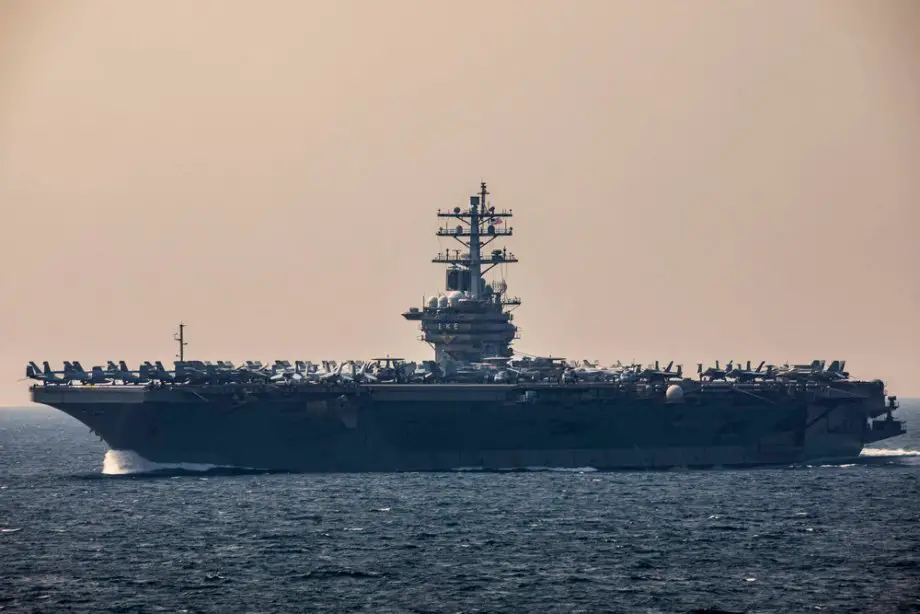Breaking news
Technical review of US Navy neutralization of Houthi offensive in Middle East.
According to information published by the US DoD on January 10, 2024, a defense operation by US naval forces successfully neutralized a complex Houthi offensive in the Southern Red Sea. This operation effectively countered a assault initiated by Iranian-backed Houthi rebels from Yemen, targeting vital international shipping lanes.
Follow Navy Recognition on Google News at this link
 The US Navy's aircraft carrier USS Dwight D. Eisenhower. (Picture source: Dvids)
The US Navy's aircraft carrier USS Dwight D. Eisenhower. (Picture source: Dvids)
The Houthi offensive from Yemen that targeted the Southern Red Sea shipping lanes was notably sophisticated, employing a range of advanced weaponry. The 18 One-Way Attack UAVs (OWA UAVs) used in the attack are a particular point of concern due to their kamikaze-style mission profile and ability to carry significant payloads over considerable distances. These UAVs are designed for precision strikes, making them a serious threat to both naval and commercial vessels.
Moreover, the inclusion of two anti-ship cruise missiles in the attack added another layer of complexity. These missiles are engineered to fly at low altitudes, making them difficult to detect on radar, and are equipped with advanced guidance systems that enable them to accurately target ships from a considerable distance.
The most unconventional component of the Houthi offensive was the anti-ship ballistic missile. This type of missile is distinct from cruise missiles in its trajectory and capability. Following a high-arcing path, it can carry larger warheads over longer distances at high speeds, and its attack from above poses a significant challenge to naval defenses.
In response to this multi-faceted threat, the joint US and UK naval forces employed a range of advanced defensive technologies and strategies. The F/A-18 fighter aircraft from the USS Dwight D. Eisenhower were crucial in engaging the UAVs and missiles. These aircraft are equipped with sophisticated radar systems and air-to-air missiles, enabling them to effectively intercept fast-moving aerial targets.
Complementing the air defense, the Aegis Combat System aboard US Navy ships like the USS Gravely, USS Laboon, and USS Mason played a pivotal role. The Aegis system is renowned for its powerful radar capabilities, which can track multiple targets simultaneously and guide intercepting missiles to neutralize threats such as incoming cruise and ballistic missiles.


























